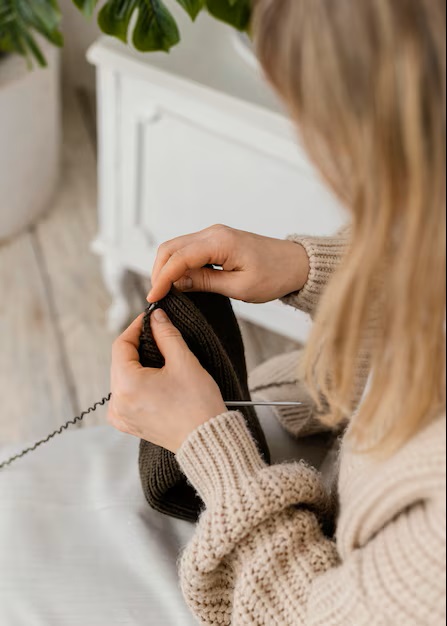Creating Accurate Quilt Blocks for Stunning Quilting Projects and Designs
Measure your fabric pieces meticulously, using a rotary cutter and a cutting mat for consistent sizes. A clear ruler can aid in ensuring each segment is exact, which directly influences the overall design integrity. Avoid unnecessary fabric waste by cutting according to your template guidelines.
Choosing the right thread can enhance the outcome of your sewing projects. Opt for high-quality, color-coordinated threads that will blend seamlessly into your design. Test your stitches on scrap material to verify tension and compatibility before beginning your main project.
Always press seams open for added accuracy. This technique allows for a flatter finish and helps prevent puckering. Using a steam iron can assist in setting seams while adding needed precision to the final appearance.
Keep a consistent seam allowance across all pieces. A quarter-inch foot can assist in maintaining uniformity when sewing seams together, crucial for achieving a cohesive look in your final design.
Choosing the Right Fabrics for Stunning Quilts
Select high-quality cotton for durability and ease of handling. Look for fabrics with a tight weave to ensure accurate cutting and stitching. Consider the weight; medium-weight cotton typically works best for most designs.
Choose colors that harmonize well together. Use a color wheel to identify complementary shades or analogous colors that create a cohesive look. Limit the palette to three or four colors to avoid visual chaos.
Experiment with patterns and textures. Combining solids with prints adds depth. Subtle textures like tone-on-tone or small florals can enhance visual interest without overpowering the design.
Take into account the fabric’s print scale. Large prints can dominate small spaces, while small prints can get lost in larger areas. Balance these elements based on the overall design layout.
Pre-wash materials before cutting to prevent shrinkage and color bleeding. This step ensures the final piece maintains its appearance and dimensions over time.
Consider the intended use. If the finished piece will endure heavy use, prioritize fabrics that can withstand wear and tear. For decorative purposes, more delicate materials can be appropriate.
Assess the fabric’s hand feel. Soft fabrics are preferable for comfort, while stiffer options can provide structure to the final result. Test samples to find the right match for your vision.
Purchase extra fabric to accommodate error margin and future repairs. A small additional allowance can save time and resources later on in the process.
Measuring and Cutting Fabric with Precision
Utilize a rotary cutter for swift and clean cuts. Ensure that the blade is sharp to prevent fraying and uneven edges.
Employ a clear acrylic ruler for accurate measurements. The grid lines assist in lining up fabric edges and ensure straight cuts.
Follow these steps for optimal results:
- Lay fabric flat on a cutting mat, ensuring no wrinkles are present.
- Use straight pins or weights to hold the fabric in place, minimizing movement.
- Measure the desired length or width directly on the fabric using the ruler, marking with tailor’s chalk or fabric marker.
- Align the ruler with the mark and cut along the edge with the rotary cutter.
For layered fabric, pin all layers together to maintain alignment during cutting. Adjust for fabric type; thicker materials may require additional pressure or a heavier blade.
Regularly check measurements, especially for larger pieces, as fabric may shift during cutting. Use clippers or scissors for intricate angles or curves for better control.
Store precision tools in a dedicated space, ensuring easy access and avoiding misplacement.
Using Templates for Consistent Block Sizes
Employ templates tailored to specific dimensions to guarantee uniformity across your pieces. Begin by selecting a robust material for the template, such as cardboard or plastic, ensuring durability through repeated use.
Carefully measure the desired size of each segment and mark these dimensions clearly on your template. Maintain accuracy by using a ruler and square to create precise angles and edges. When cutting fabric, use the template to trace the shape onto your material, ensuring consistency.
For intricate designs, consider creating multiple templates to accommodate various shapes. Organize and label templates clearly for easy access during the assembly process. Utilizing templates not only enhances precision but also accelerates the preparation phase, allowing for seamless integration of shapes.
Regularly check that your templates remain in good condition; any wear can affect the consistency of shapes. If necessary, replace them to maintain quality in your projects.
Integrate templates into your creative process to establish uniform sizes and shapes, leading to visually appealing results.
Mastering Seam Allowances for Accurate Assembly
Always measure seam allowances with precision; a common standard is 1/4 inch. Use a reliable ruler or a specific foot on your sewing machine designed for this measurement. This ensures consistency across all pieces being sewn.
Choosing the Right Tools
Opt for a rotary cutter and cutting mat to achieve clean edges. A pair of sharp fabric scissors also aids in achieving exact cuts. Invest in a marking tool to delineate the seam lines, providing visual guidance while sewing.
Pressing Techniques
Press each seam open after sewing. This eliminates bulk and prevents fabric from twisting, promoting alignment during assembly. A hot iron with steam can help set the stitches, ensuring pieces lie flat and fit together seamlessly.
Pressing Techniques to Improve Block Accuracy
Utilize steam during the pressing process to achieve a crisp finish on each segment. This technique helps in removing wrinkles and allows the seams to lie flatter, ensuring precision during assembly.
Sequence of Pressing
Always press seams before cutting any shapes. Begin by pressing the seam allowance towards the darker fabric to avoid fabric distortion. This practice prevents stretching and maintains dimensions. Consistency in pressing direction is vital across all segments.
Tools and Materials
Invest in a high-quality iron with an adjustable steam function. A pressing mat designed for quilting will assist in evenly distributing heat and moisture. Consider using clapper boards to absorb excess moisture after pressing, resulting in sharper seams.
| Technique | Benefits |
|---|---|
| Pressing with Steam | Flattens seams, removes wrinkles |
| Pressing Direction | Prevents distortion, maintains measurements |
| Using Clapper Boards | Sharpen seams, enhance fabric stability |
Embrace proper pressing techniques to elevate the precision of each component, leading to a well-structured finished item.
Assembling Blocks for Symmetrical and Balanced Designs
Begin with a precise layout. Employ a design wall to visualize placements. This aids in recognizing patterns and ensuring uniformity. Use measuring tools to verify dimensions consistently throughout the process.
Select fabrics with a cohesive color scheme. Stick to a limited palette to enhance harmony. Mixing various textures can add depth but maintain consistency in tone. Analyze how each piece interacts within the whole.
Pay close attention to seam allowances. Standardizing this measurement ensures that each component aligns flawlessly. A slight deviation can lead to misalignment, affecting the overall symmetry. Use a quarter-inch foot on your sewing machine for accuracy.
Stitch components together in a systematic manner. Assemble in rows or columns to preserve organization. Pinning pieces before sewing helps maintain alignment. Consider using a pressing tool to flatten seams as you go, which aids in achieving a polished finish.
Assess the overall design frequently. Step back and evaluate the layout from different angles. This practice helps catch any inconsistencies early on, allowing for adjustments before final assembly. Ensure that all sections contribute to a balanced visual effect.
Finally, finish with a thorough review. Inspect each segment for proper alignment and balance. Minor tweaks at this stage can significantly enhance the overall aesthetic, resulting in a cohesively designed piece.
Q&A: Accurate quilt blocks
How can quilters get accurate piecing when working with small pieces like half-square triangles and flying geese?
To get accurate piecing with small pieces, quilters should use a scant quarter inch seam and press seam allowances in opposite directions to help nest seam intersections. Spray starch can help stabilize bits of fabric and reduce distortion. Using a ruler on top to check the correct size of each triangle and trimming to the right size ensures that quilt block patterns come together cleanly.
What are the benefits of using spray starch and an ironing board when preparing fabric for accurate piecing?
Spray starch helps stiffen fabric, making it easier to handle and reducing stretching during cutting and sewing. When used on an ironing board, it improves the crispness of seams and helps achieve accurately cut shapes, especially for diagonal cuts like square triangles. For a perfect quilt, quilters often rely on starch when assembling block patterns or small pieces.
Why is trimming important in achieving accurate quilt block patterns and avoiding inaccurate cutting?
Trimming ensures that each piece of fabric is the correct size before joining blocks together. This is especially important when working with half-square triangles or other units that must align perfectly. Inaccurate cutting or failing to trim can lead to mismatched seams and affect the finished quilt’s appearance. Trimming also removes any extra threads or uneven edges of the fabric.
What are 7 tips and tools every quilter should know to improve their piecing techniques and fabric choices?
-
Use a scant quarter inch seam for accurate piecing.
-
Starch fabric before cutting to reduce fraying and stretching.
-
Trim triangle units like flying geese or half-square triangles to the correct size.
-
Cut strips with a sharp rotary cutter and ruler on top for precision.
-
Match seam intersections by pressing rows together in opposite directions.
-
Use a presser foot designed for a quarter inch seam.
-
Keep a seam ripper handy for fixing mistakes without damaging smaller pieces. These tips and tools help quilters achieve a more perfect quilt with clean lines and balanced block patterns.
What are some helpful tips and tricks for calculating yardage accurately when following quilt patterns?
To calculate yardage accurately for quilt patterns, always read the entire pattern first to understand block repetition and layout. Use a calculator to convert total fabric needs from inches to yards, and add a small buffer for errors or directional prints. One of the most important tips and tricks is to account for seam allowances and include extra yardage for binding and the backing of the finished quilt.
How does understanding quilt patterns help ensure a successful finished quilt project?
Understanding quilt patterns ensures that quilters follow the correct sequence, fabric placement, and block assembly, which are critical for achieving a balanced, finished quilt. Following detailed diagrams and yardage requirements prevents fabric shortages and layout mistakes. Paying close attention to the pattern’s instructions leads to better planning, accurate cuts, and a more professional-looking result.



